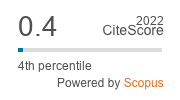Contact toxicity of synthetic pyrethroid insecticides to honey bees Apis cerana indica Fab., Apis mellifera Linnaeus and Trigona iridipennis Smith in laboratory condition
Keywords:
Insecticides, toxicity, Apis cerana indica, Apis mellifera, Trigona iridipennisAbstract
The toxicity of insecticides was assessed to worker honey bees of Indian bee Apis cerana indica Fab., Italian bee Apis mellifera Linnaeus and Stingless bee Trigona iridipennis Smith by contact toxicity method and observations made recorded 6, 12 and 24 Hours after treatment (HAT) and the per cent mortality were worked out. The different treatment of insecticides viz., newer formulation of bifenthrin 10 EC at 40, 80, 120 and 160 a.i. ha-1, Wilthrin® 10 EC at 80 a.i. ha-1 and Lambda-cyhalothrin 5 EC at 25 a.i. ha-1 was used to determine the toxicity level and each treatment was replicated three times. Results revealed that, bifenthrin 10 EC was highly toxic to workers of all three species of honey bees tested. At 24 HAT, bifenthrin 10 EC at 160 g a.i ha-1 was highly toxic to honey bee which was evident from the observation of Indian bees (93.33% mortality), Italian bees (90.00%) and stingless bees (96.67%).Â


